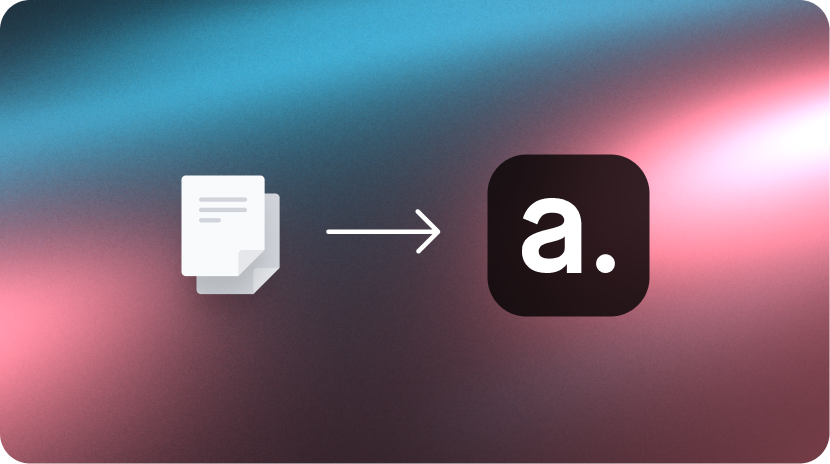Underwriting is one of the most important tasks in the insurance industry. It is the job of underwriters to assess applications for insurance cover and decide on the terms and conditions of policies offered.
The first step in underwriting is to triage submissions into those which will be considered for cover and those which are too risky to insure. This is basic but time-consuming work for underwriters.
Luckily, the enhanced capabilities of modern AI means there are more efficient ways to effectively triage submissions while freeing up underwriters for more important work.
Automated insurance submission triaging
Automated submission triaging is all about automating the process of filtering applications so that underwriters can spend their time on more high-value tasks.
Underwriters can spend hours or even days simply pouring through submissions to find those worth covering, but with AI or machine learning this time can be drastically reduced.
This doesn't make underwriters redundant, it just frees up their time to spend on the more complicated tasks of setting appropriate cover and pricing premiums for policyholders.
Automating submission triaging makes for a more efficient working model as well as happier employees. It also speeds up the application process, resulting in more satisfied customers.
How do traditional insurers triage submissions?
The insurance triaging process can be loosely separated into two steps: data gathering and decision making. Data gathering is about collecting the data needed to assess risk. Traditionally, this involves gathering small amounts of relevant data directly from customers.
The second stage of triaging is decision making. This is when the data is used to triage submissions based on risk (as well as the individual insurer's appetite for risk and business model).
Triaging usually involves the use of complex algorithms as well as good judgement skills. Using this method, submission triaging is accurate but incredibly time-consuming. While once there was no realistic alternative, today insurtech innovations have provided the technology to automate the triaging process (at least partially) across all sectors of insurance.

How AI can help to automate insurance submission triaging
AI software can be used to partially automate submission triaging by using a scoring system which automatically categorises submissions by risk level.
The first stage, as in traditional triaging, is that of data gathering. This can incorporate traditional data gathering techniques such as collecting data directly from customers, or it can mean more sophisticated data gathering.
If we take the example of a customer applying for commercial insurance on a property, some of the data points that could be used to calculate risk might be:
The property's address
The size of the property
The total insured value
Operations of the insured property
The building materials used
This data is fed into an AI engine which will analyse the risk of providing this commercial property insurance and calculate a risk score between 1 and 10. Using this triaging system, insurers can set their own bands for which scores result in immediate acceptance or rejection.
For example, a score between 1 and 3 - low risk - could be automatically accepted, while a score of 8 or more - high risk - could be automatically declined. Submissions scoring between 4 and 7 might then be forwarded to the underwriter for further inspection.
In this way, the triaging process is faster for both clients and insurers, but underwriters are still fully in control of the triaging criteria and standards.
Improving insurance triaging with machine learning
This description of rule-based triaging implements smart AI technology to do the work of underwriters. But triaging can be made both more accurate and more efficient by integrating machine learning technology into this system.
A machine learning algorithm will change and improve over time based on its experience. In automated submission triaging, systems which benefit from machine learning technology will continue to find new patterns in historical policy and claim data to aid in risk assessment and accurate scoring.
Algorithms which incorporate elements of machine learning undoubtedly give the best results over time. Machine learning means that the automated triaging system is always improving, and ensures that insurers are monitoring the most relevant data for their product.
What are the benefits of automated submission triaging?
The key benefits of automated submission triaging are clear.
The first is that by partially automating the triaging process, highly skilled underwriters can spend more time on complex tasks. In turn, this means that they can offer more value to those customers whose submissions are accepted.
Triaging using machine learning technology is a relatively simple and effective way to refine this process and improve accuracy over time. By assessing thousands of data points over hundreds of submissions, machine learning software can refine its algorithms and spot red flags which human underwriters might not even be looking for.
Finally, automating submission triaging using either AI or machine learning technology doesn't have to mean overhauling an existing system. Automated scoring and triaging algorithms can work with an insurer's existing model to provide continuity to current customers while slowly moving the company's risk level in the right direction.

How Artificial are automating submission triaging
At Artificial, our sophisticated insurance software can automate the submission triaging process using both AI and machine learning to offer a triaging system which learns and adapts over time.
You can read in more detail how we score and triage submissions and also learn about the Artificial platform and its wide range of uses for commercial insurance companies here.
We've built a digital, cloud-based platform which can digitise and manage the insurance value chain by collecting and enriching customer data, scoring and triaging risks, building digital contracts for those submissions which are accepted by insurers, and underwriting algorithmically.
For more information, get in touch.

